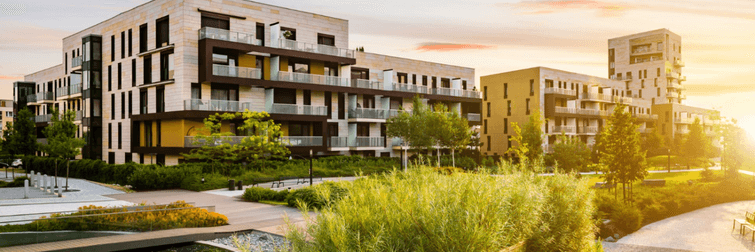
news: Planning for the Future
Tuesday 10th November 2020
The Planning for the Future white paper proposes a radical reform of the planning system in an attempt to simplify and speed up the planning of new homes, and to better engage local communities through decision-making processes. It has certainly split opinion and whatever your views it is very likely that big changes to the planning system are on their way.
As sustainable transport planners, we often work with local planning and transport authorities to identify locations for strategic housing and employment that will maximise sustainable mobility outcomes over the long-term and so we have taken a keen interested in the government’s proposals.
Earlier this summer we shared a blog about our first impressions of the white paper. Now, in our response to the consultation, we have highlighted where we think the government is going in the right direction, but also were there are missed opportunities. The key messages are:
- Transport and land-use planning should go hand-in-hand - With only five references to ‘transport’ and two references to ‘carbon’, one of our concerns is that planning for sustainable transport connections has not been given much prominence. We believe that the White Paper should seek to fully integrate transport considerations into the planning process to avoid designing car-dependent communities.
- The location of growth is crucial to sustainable mobility outcomes - The existing Green Belt policy means that growth is pushed out to locations which require new residents to travel further, often by car. The ‘Call for Sites’ process also tends to result in car dependent growth because too much emphasis can be placed on sites that are immediately available, rather than those that are well-located in relation to current and potential future sustainable transport links. We hope that the three simple Growth / Renewal / Protection designations remove the need for a ‘Call for Sites’ from the development planning process, rather than simply reinforcing the Green Belt and forcing new development to locations further from the places and economies that drive demand for housing growth.
- Who is the arbiter of beauty? - We welcome more detail on how the fast track for creating beautiful places would be delivered in practice. ITP’s vision for beauty encapsulates the conditions that create low carbon communities; mixed land uses, people-focussed places where walking and cycling are the first choice for everyday local trips, tree-lined streets, car parking sensitively designed-in and ‘hidden’ from view, and high quality transport interchanges. The images in the White Paper did not appear to feature these kind of places - underlining the subjective nature of beauty, and the challenge involved in allowing it to fast-track growth.
- The overhaul of the Plan-making process is broadly welcome - We suggest that any planning system reform needs to be backed by significant funding for local authorities to aid capacity building and expansion of IT capabilities. Any rules-based system must also be backed by regulatory support that ensures compliance, otherwise it is currently relatively easy for developments to demonstrate compliance with policies intended to maximise sustainable mobility outcomes, whilst still generating high levels of on- and off-site car use to the places people actually want (or need) to travel to.
You can read our full consultation response here.
For more information on our experience of supporting Local Plan development click here or get in touch with Geoff Burrage.
